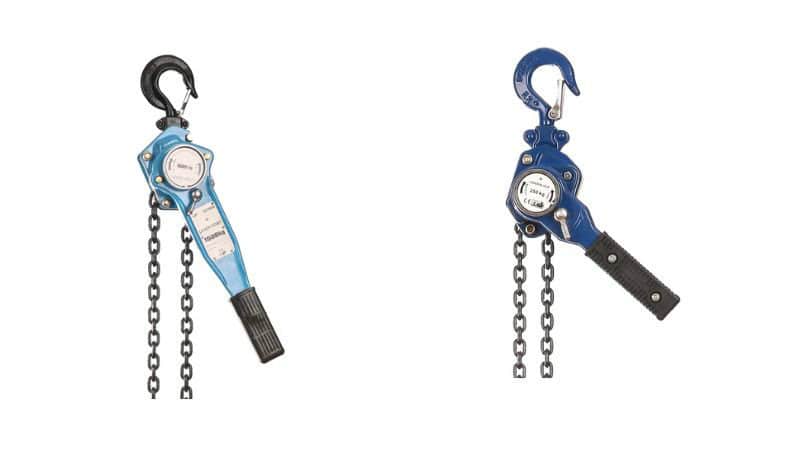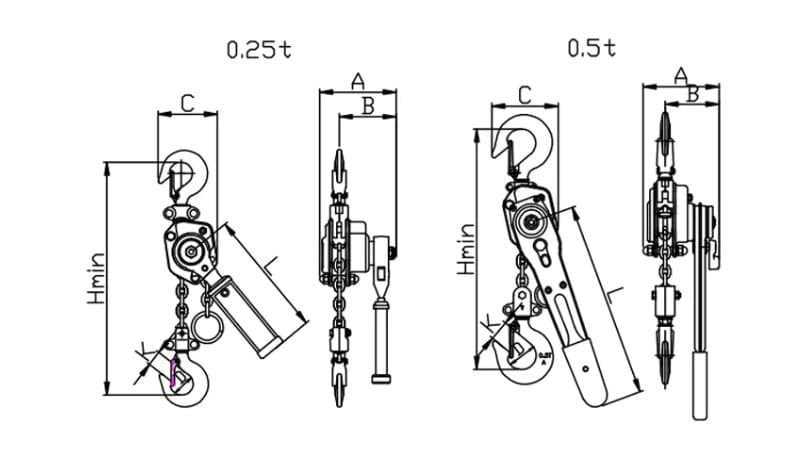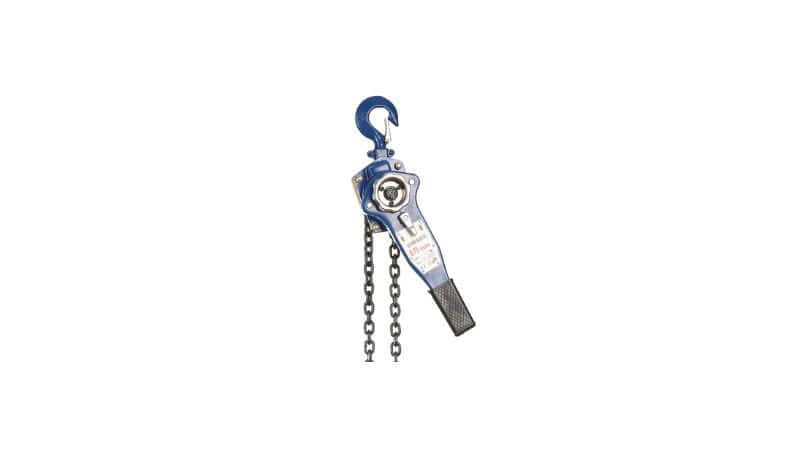Lever chain hoists are versatile and portable manual lifting devices widely used across various industries like construction for vertical lifting, lowering, or pulling heavy loads.
These hoists operate on a simple ratchet and pawl mechanism, allowing precise control over load movement by cranking a lever handle. Despite their straightforward design, proper operation and safety precautions are crucial when using lever chain hoists to prevent accidents and ensure efficient material handling.
In this article, we will provide a comprehensive guide on how to use a lever chain hoist safely and effectively.

What is Lever Chain Hoists
Lever chain hoists, also known as lever blocks or come-alongs, are portable manual lifting devices used for lifting, lowering, or pulling a load.
They are equipped with a lever handle that operates a ratchet and pawl mechanism, which in turn moves a chain or wire rope wound around a drum inside the hoist body. This mechanism allows for precise control over the lifting and lowering of loads.
What are the Components of a Lever Hoist
A lever chain hoist consists of a few key components that work together to lift loads:
- Handle and Lever Mechanism: The handle, when pumped, drives the internal gears and sprocket.
- Gears: A set of small and large gears multiply the force you apply through the lever.
- Sprocket: Engages with the load chain to lift or lower the load.
- Load Chain: The durable chain that actually lifts the load when you actuate the lever.
- Hook(s): Attached to the load chain, these secure the load and can be attached to a fixed point or trolley when lifting.
What Should I Do Before Using a Lever Hoist

Before you start using a lever chain hoist, it’s important to ensure everything is in top shape and properly set up. Safety and efficiency hinge on thorough inspection and correct rigging equipment setup.
First, you’ll want to inspect the lever hoist to verify that it’s in good working order. Look over the chain for any signs of damage, such as cracks or twisted links. The brake system is critical for safe operation; make sure it engages smoothly and holds securely when applied. Next, check the hoist for proper lubrication—this ensures the mechanics move freely and reduces wear.
Setting up your rigging correctly is vital for the safe use of your lever hoist. Make sure to:
- Choose a secure anchor point that can handle more than the weight of your load.
- Verify that the mounting surface and rigging are sufficient to prevent any shifting or slipping under load.
- Align the hoist directly above the load to avoid tilting and ensure a straight lifting path.
How to Use a Lever Hoist

The mechanical advantage of a lever chain hoist allows you to lift heavy weights with relatively less effort.
By applying force to the lever, the internal mechanisms multiply this force to lift the load. You operate the hoist by moving the handle back and forth, which, through the gears and sprocket, moves the load chain and lifts or lowers your load.
Here is how to deal with a lever hoist:
Lifting (Hoisting)
- Set the Selector Lever: Move the selector lever to the “UP” position.
- Take Up Slack: Turn the guide handle clockwise to take up the slack in the load chain.
Operate the Lever: Manipulate the operating handle clockwise to lift the load.
Lowering (Releasing)
- Set the Selector Lever: Move the selector lever to the “DOWN” position.
- Operate the Lever: Manipulate the operating handle counterclockwise to lower the load.
What is the Safety Factor of a Lever Hoist
The safety factor of a lever hoist is typically 4:1. This means that the hoist is designed to handle loads up to four times its rated working load limit (WLL) under test conditions to ensure safety and reliability during actual use
Troubleshooting Common Issues
If you encounter issues such as chain jamming or unusual noise, stop operation immediately to assess the problem. Avoid using any makeshift tools like cheater bars that can compromise the operation. Common issues may include:
- Excessive Noise: Check if the chain requires lubrication.
- Chain Jamming: Ensure the chain is straight and free of kinks or debris.
- Overloading: Refer to your hoist’s load capacity to avoid this issue.
How to Store the Lever Hoist

Ensure the lever hoist is clean and completely dry before storing. Remove any dirt, grease, oil or moisture that could lead to corrosion.
Hung your Lever hoists from the suspension/top hook when stored. The chain should not be allowed to touch the ground.
Avoid Galvanizing or Plating. Do not galvanize or apply any plating process to the load-bearing parts like the chain unless specifically approved by the manufacturer.
